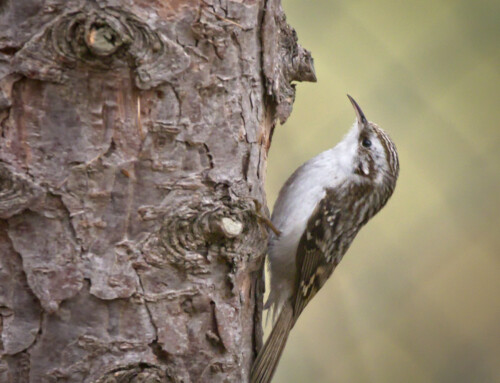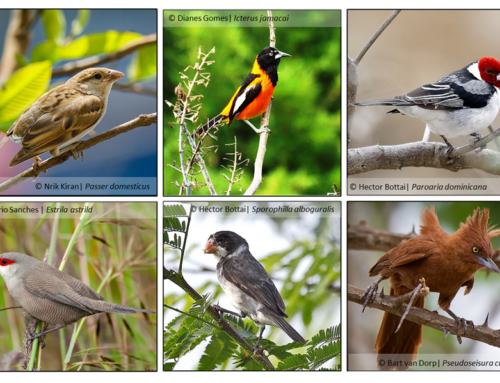LINKED PAPER
Testing hypotheses driving genetic structure in the cooperatively breeding Brown‐headed Nuthatch Sitta pusilla. Han, K.-L., Kimball, R. T. & Cox, J. A. 2019. IBIS. DOI: 10.1111/ibi.12642 VIEW
The forest landscape in Florida has changed dramatically over the years. In northern Florida, pine trees used to cover around 5.4 million hectares. Today only 2.2 million hectares of pineland remain. The decline in forest habitat is even more severe in southern Florida: an estimated 3.5 million hectares has been reduced to roughly 0.4 million hectares. Such large changes in habitat availability can have detrimental effects on forest birds. Small populations become isolated in forest patches where they quickly lose genetic variation and might go locally extinct (Frankham 2005). To take effective conservation measures, it is thus important to understand the genetic structure of bird populations in this fragmented landscape. A recent study focused on the Brown-headed Nuthatch (Sitta pusilla), a cooperatively breeding species endemic to the pine forests in the southeastern USA (Cox & Slater 2007).
Three genetic clusters
The researchers collected blood samples from almost 400 individuals, representing 14 distinct populations (13 in mainland Florida and one on the Bahama’s). Using a set of molecular markers, they characterized the population structure of the Brown-headed Nuthatch. There was a clear distinction between birds in Florida and on the Bahama’s, supporting the recommendation of elevating the Bahama’s population to species rank (Hayes et al. 2004). In Florida, the clustering program Structure identified three main genetic groups that correspond to the northern populations, the southern populations and a population in St. Sebastian. The distinctness of the birds in St. Sebastian is probably due to historical isolation associated with the St. Johns River. The habitat around this river consists of freshwater marshes, hardwood forests and prairie grasslands, which form barriers for the Nuthatches.
Figure 1 Genetic structure of the Brown-headed Nuthatch in Florida. There are three main genetic clusters (a) that correspond to the northern populations, southern populations and St. Sebastian. Including additional information shows more population structure in the south (b).
Southern isolation
Including extra geographic information allowed the researchers to uncover more fine-grained population structure within the southern populations (Hubisz et al. 2009). Moreover, there was less genetic variation in southern Florida compared to the northern populations. Together, these results suggest that the populations in southern Florida are more isolated and are slowly losing genetic variation. These findings have important implications for conservation. The genetic structure uncovered in this study will need to be taken into account when devising conservation measures for the Brown-headed Nuthatch. For example, by building extensive habitat corridors between the isolated populations in the south.
References
Cox, J. A., & Slater, G. L. (2007). Cooperative breeding in the Brown-headed Nuthatch. The Wilson Journal of Ornithology 119: 1-8. VIEW
Frankham, R. (2005). Genetics and extinction. Biological conservation 126: 131-140. VIEW
Hayes, W. K., Barry, R. X., McKenzie, Z., & Barry, P. (2004). Grand Bahama’s Brown-headed Nuthatch: a distinct and endangered species. Bahamas Journal of Science 12: 21-28. VIEW
Hubisz, M. J., Falush, D., Stephens, M., & Pritchard, J. K. (2009). Inferring weak population structure with the assistance of sample group information. Molecular Ecology Resources 9: 1322-1332. VIEW
Kautz, R. S. (1998). Land use and land cover trends in Florida 1936–1995. Florida Scientist 61: 171-187. VIEW
Image credits
Featured image: Brown-headed Nuthatch Sitta pusilla | Dick Daniels | CC BY-SA 3.0 Wikimedia Commons





